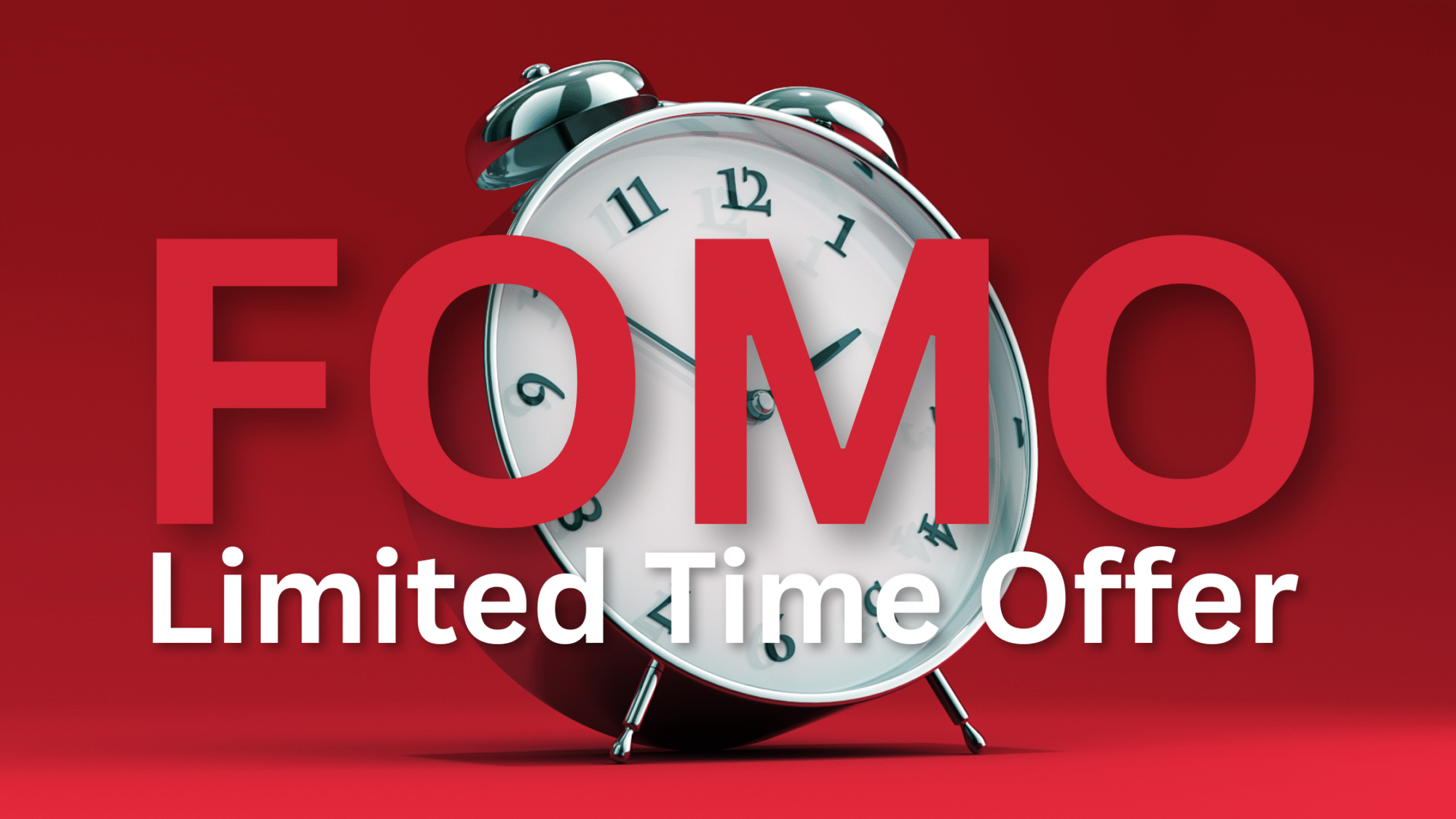Every day, thousands of ads compete for our attention, but only a few compel us to stop, click, and take action immediately. What separates those ads from the rest? Often, it’s not just the visuals or clever copy, it’s the psychology behind them. One of the most powerful psychological drivers is FOMO in marketing campaigns: the fear of missing out.
What is FOMO in Marketing?
FOMO works because it triggers urgency, scarcity, and a sense of social pressure. When people feel they’re about to miss something valuable, limited, or exclusive, they’re far more likely to act quickly. Brands have mastered this tactic and use it across every platform and industry to drive results.
Time-Limited Offers That Create Urgency
Take Amazon’s Prime Day as an example. The entire campaign is built around time-limited offers that disappear within hours. With banners counting down and products vanishing from the cart, shoppers feel pressure to buy before they lose the deal forever. The urgency doesn’t just encourage action, it accelerates it.
Scarcity and Stock Alerts to Trigger Fast Decisions
Travel and booking platforms like Booking.com use low-stock alerts to amplify scarcity. Messages such as “Only 2 rooms left at this price” or “Booked 10 times in the last 24 hours” prompt users to act fast, even if they were just browsing. The fear that someone else might beat them to the deal is powerful enough to convert a hesitant visitor into a buyer.
Exclusivity and Drops That Fuel Demand
Nike has also embraced FOMO through its SNKRS app, where exclusive sneaker drops are available for only a few minutes. The limited supply, combined with the unpredictable release schedule, builds anticipation and drives massive engagement. People aren’t just buying shoes, they’re competing for them. And that exclusivity fuels demand like nothing else.
Social Proof That Encourages Participation
Another example of FOMO done right is Spotify’s Wrapped campaign. By releasing personalised listening stats each year, Spotify creates a social moment that everyone wants to be part of. As soon as Wrapped goes live, timelines are flooded with users sharing their results. Those who haven’t checked theirs yet feel left out, and quickly rush to join in.
Countdown Timers That Build Real-Time Urgency
Countdown timers are also widely used across e-commerce and travel sites. Whether it’s Expedia showing a timer on special deals or a Shopify store running a flash sale, seeing the seconds tick down creates a real-time sense of urgency that motivates action. It’s not theoretical, it’s visual, immediate, and persuasive.
Why FOMO Works So Well
So why does FOMO work so effectively? It bypasses logic and appeals directly to emotion. It creates tension. If I don’t act now, I’ll lose something. Whether that’s a deal, an experience, or a spot in a community, people instinctively move to avoid missing out. And brands that understand this can guide consumer behaviour more effectively than those that rely on rational selling points alone.
How to Use FOMO in Your Campaigns
If you’re looking to use FOMO in your campaigns, the key is to make it authentic. Highlight real scarcity, whether in time or inventory. Offer genuine exclusivity through limited drops or VIP access. Use real-time data to create transparency around demand, like showing how many people are viewing a product. Just be careful not to fake urgency or exaggerate scarcity. Consumers are more informed than ever, and trust, once lost, is hard to regain.
Final Thoughts
Ultimately, FOMO is a tool that turns passive interest into immediate action. When used ethically and creatively, it can transform an ordinary campaign into one that gets saved, shared, and acted on, before it’s too late.
